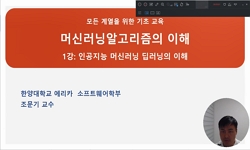Background/Aims: Metabolic dysfunction-associated steatotic liver disease (MASLD) is characterized by fat accumulation in the liver. MASLD encompasses both steatosis and MASH. Since MASH can lead to cirrhosis and liver cancer, steatosis and MASH must ...
http://chineseinput.net/에서 pinyin(병음)방식으로 중국어를 변환할 수 있습니다.
변환된 중국어를 복사하여 사용하시면 됩니다.
- 中文 을 입력하시려면 zhongwen을 입력하시고 space를누르시면됩니다.
- 北京 을 입력하시려면 beijing을 입력하시고 space를 누르시면 됩니다.



Identification of signature gene set as highly accurate determination of metabolic dysfunction-associated steatotic liver disease progression
한글로보기https://www.riss.kr/link?id=A109023185
-
저자
Sumin Oh (Laboratory of Biomedical Genomics, Department of Biological Sciences, Sookmyung Women’s University, Seoul, Korea; Research Institute of Women’s Health, Sookmyung Women’s University, Seoul, Korea) ; Yang-Hyun Baek (Liver Center, Department of Internal Medicine, Dong-A University College of Medicine, Busan, Korea) ; Sungju Jung (Laboratory of Biomedical Genomics, Department of Biological Sciences, Sookmyung Women’s University, Seoul, Korea) ; Sumin Yoon (Laboratory of Biomedical Genomics, Department of Biological Sciences, Sookmyung Women’s University, Seoul, Korea) ; Byeonggeun Kang (Department of Biological Sciences and Institute of Molecular Biology and Genetics, Seoul National University, Seoul, Korea; Bio-MAX Institute, Seoul National University, Seoul, Korea) ; Su-hyang Han (Laboratory of Biomedical Genomics, Department of Biological Sciences, Sookmyung Women’s University, Seoul, Korea) ; Gaeul Park (Division of Rare Cancer, Research Institute, National Cancer Center, Goyang, Korea) ; Je Yeong Ko (Department of Biological Sciences, Sookmyung Women’s University, Seoul, Korea) ; Sang-Young Han (Liver Center, On Hospital, Busan, Korea) ; Jin-Sook Jeong (Department of Pathology, Dong-A University Medical Center, Busan, Korea) ; Jin-Han Cho (Department of Diagnostic Radiology, Dong-A University Medical Center, Busan, Korea) ; Young-Hoon Roh (Department of Surgery, Dong-A University Medical Center, Busan, Korea) ; Sung-Wook Lee (Liver Center, Department of Internal Medicine, Dong-A University Medical Center, Busan, Korea) ; Gi-Bok Choi (Department of Radiology, On Hospital, Busan, Korea) ; Yong Sun Lee (Division of Rare Cancer, Research Institute, National Cancer Center, Goyang, Korea; Department of Cancer Biomedical Science, Graduate School of Cancer Science and Policy, National Cancer Center, Goyang, Korea) ; Won Kim (Department of Internal Medicine, Seoul National University College of Medicine, Seoul Metropolitan Government Boramae Medical Center, Seoul, Korea) ; Rho Hyun Seong (Department of Biological Sciences and Institute of Molecular Biology and Genetics, Seoul National University, Seoul, Korea) ; Jong Hoon Park (Department of Biological Sciences, Sookmyung Women’s University, Seoul, Korea) ; Yeon-Su Lee (Division of Rare Cancer, Research Institute, National Cancer Center, Goyang, Korea) ; Kyung Hyun Yoo (Laboratory of Biomedical Genomics, Department of Biological Sciences, Sookmyung Women’s University, Seoul, Korea; Research Institute of Women’s Health, Sookmyung Women’s University, Seoul, Korea)
- 발행기관
- 학술지명
- 권호사항
-
발행연도
2024
-
작성언어
English
- 주제어
-
등재정보
KCI등재,SCOPUS,SCIE
-
자료형태
학술저널
- 발행기관 URL
-
수록면
247-262(16쪽)
- 제공처
-
0
상세조회 -
0
다운로드
부가정보
다국어 초록 (Multilingual Abstract)
Background/Aims: Metabolic dysfunction-associated steatotic liver disease (MASLD) is characterized by fat accumulation in the liver. MASLD encompasses both steatosis and MASH. Since MASH can lead to cirrhosis and liver cancer, steatosis and MASH must be distinguished during patient treatment. Here, we investigate the genomes, epigenomes, and transcriptomes of MASLD patients to identify signature gene set for more accurate tracking of MASLD progression.
Methods: Biopsy-tissue and blood samples from patients with 134 MASLD, comprising 60 steatosis and 74 MASH patients were performed omics analysis. SVM learning algorithm were used to calculate most predictive features. Linear regression was applied to find signature gene set that distinguish the stage of MASLD and to validate their application into independent cohort of MASLD.
Results: After performing WGS, WES, WGBS, and total RNA-seq on 134 biopsy samples from confirmed MASLD patients, we provided 1,955 MASLD-associated features, out of 3,176 somatic variant callings, 58 DMRs, and 1,393 DEGs that track MASLD progression. Then, we used a SVM learning algorithm to analyze the data and select the most predictive features.
Using linear regression, we identified a signature gene set capable of differentiating the various stages of MASLD and verified it in different independent cohorts of MASLD and a liver cancer cohort.
Conclusions: We identified a signature gene set (i.e., CAPG, HYAL3, WIPI1, TREM2, SPP1, and RNASE6) with strong potential as a panel of diagnostic genes of MASLD-associated disease.
동일학술지(권/호) 다른 논문
-
- 대한간학회
- Chen-Te Huang
- 2024
- KCI등재,SCOPUS,SCIE
-
JCAD, a new potential therapeutic target in cholestatic liver disease
- 대한간학회
- Byoung Kuk Jang
- 2024
- KCI등재,SCOPUS,SCIE
-
Steatotic liver disease: Know your enemies
- 대한간학회
- Lung-Yi Mak
- 2024
- KCI등재,SCOPUS,SCIE
-
- 대한간학회
- Michihiro Iwaki
- 2024
- KCI등재,SCOPUS,SCIE




 KCI
KCI






